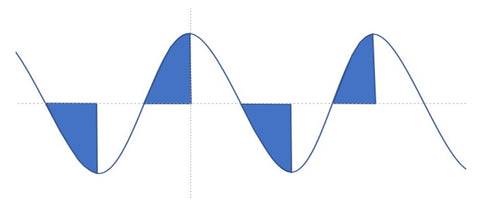Can LED lights be dimmed?
GL LED
Can LED lights be dimmed?
Can LED lights be dimmed? Let’s figure out an answer through the following steps.
Step 1
What is an LED light?
LED is an abbreviation for light emitting diode, which is a type of semiconductor that is not used in electronic devices to control operational speed, but rather to generate visible lights under appropriate conditions to illuminate our spaces. When a current passes through LED chips, electrons in the semiconductor recombine with certain electron holes and release energy in the form of photons (lights).

The distinguished process of generating light makes LEDs superior to traditional lighting, such as regular incandescent, halogen or fluorescent bulbs, in terms of efficiency and flexibility.
- LEDs consume much less energy to generate the same lumens of light.
- They have a much longer lifespan than other types of lights.
- LEDs need very low maintenance costs and hassle.
- Extreme flexibility in shapes and application environments.
Step 2
What is dimming?
Simply to say, dimming means reducing the output (lumens) of a lighting fixture, typically by changing the voltage waveform applied to the light fixture. A dimming feature is desired to change intensity of lights to suit different moods or scenes or reduce energy consumption.
There are different ways to reduce power from reaching a light source (we will focus on LEDs) to produce a dimming effect.
1. Phase control
Phase control is the most common type of dimming used with LEDs. It shortens the amount of time that the power is supplied to LEDs, and therefore reduces the overall light output.
There are two types of phase control.
a. Leading edge
Leading-edge dimming reduces the power at the beginning of the cycle. This can result in a smoother effect and is often used with low-voltage, higher wattage LEDs. It is also commonly known as Triac Dimming, SCR Dimming, MLV dimming, and Forward Phase control dimming.

Figure 1. Input power cut at beginning of each cycle by leading-edge dimming
b. Trailing Edge
Trailing edge dimming reduces the power at the end of the cycle, which can result in a more abrupt effect. Trailing edge dimming is also referred to as ELV or Reverse Phase dimming.

Figure 2 Input power cut at the end of each cycle by Trailing-edge dimming
2. 0-10V
0-10V dimming is one of the easiest dimming methods to control light intensity. For a 0-10V dimming driver, it typically has two wires (Figure 3, pink and violet) to conduct the circuit. A 10V voltage is produced when the two wires are open and not touching each other, and a light output level will be 100%. A 0V voltage is produced when the two wires are connected and the light output level will be at the minimum. A 0-10V dimmer controls the voltage and consequently adjusts the brightness of a light fixture.

Figure 3. 0-10V dimming wires
3. Pulse Width Modulation (PWM)
PWM is a type of digital dim that works by rapidly turning the light on and off, and light intensity will be determined by the speed at which the light is turned on and off. This type of dimming is ideal for lighting systems that need to be dimmed below 40 percent in a very consistent manner.
LEDs that are “on” during 90% of each cycle will be brighter than those that are “on” during 10% of each cycle. In addition, a higher frequency of pulses ensures the flickering is not noticed.
Fundamentally, dimmers will send a dimming signal to LED lights to perform a dimming feature. As long as LED lights can receive, recognize and respond to the dimming signal, the LED lights can be dimmed.
Step 3
How can you tell if an LED light is dimmable?
A dimmable LED fixture will state “dimmable” in its product description; otherwise, it would be safer to assume the fixture is non-dimmable. A majority of LED lights on the market are dimmable. For those non-dimmable LED bulbs, the electrical circuit inside the LED bulbs is not designed to interpret the dimming signal from a dimmer.
All GL LED lighting products are dimmable and can be controlled with different types of dimmers. GL LED also provides various dimmers/controllers that are compatible with our LED lighting products.
Step 4
How do I make my LEDs dim? Do LED lights require a special dimmer switch?
For dimmable LED lights, a dimmer with a compatible driver/transformer will be needed to dim the light. The power supply manufacturers often offer relevant compatibility dimmer lists. Also it needs to be noted that the output wattage of both the dimmer and the transformer must be larger than the output wattage of the LED light to ensure a proper dimming function.
In summary, most LED lights are dimmable and they can be identified from product descriptions. Dimmer switches used need to be compatible with drivers that power the lights. All GL LED lighting products are dimmable and we have compatible dimmers and drivers for the lights as well. Please contact us if you have any questions on our products.